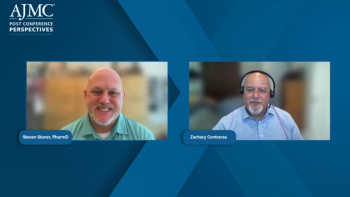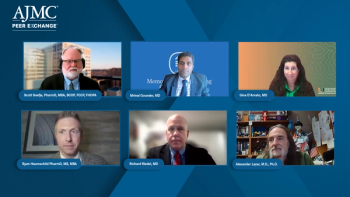
The ASCO Value Framework as a Tool for Shared Decision Making
Bruce A. Feinberg, DO: Ira, how do you feel about ASCO’s Value Framework?
Ira Klein, MD, MBA, FACP: Well, I think it’s like what Mike said—it’s really more about shared decision making. It also contains some of the elements that Peter’s tool [Dr. Peter Bach, DrugAbacus] contains, but contains them in ways that really don’t actually move you to a specific price. It just moves you to a place.
Bruce A. Feinberg, DO: Right. You get a value story, and then there’s a price. You have to kind of look both ways and decide if it feels good.
Ira Klein, MD, MBA, FACP: Yeah.
Bruce A. Feinberg, DO: However, one thing I liked about it is that it’s the only tool that was released with a peer-reviewed manuscript that goes into the detail of the methodology. There’s no guesswork about the process that was used and how it came about. But it’s so unwieldy.
Ira Klein, MD, MBA, FACP: That’s the thing—it’s just so big, I don’t know how applicable it’s going to be.
Ted Okon, MBA: It’s not practical. If you look at oncologists that are out there looking at it, and I don’t mean to demonize it because I think it’s a step in a right direction, but I think it’s just not practical.
Ira Klein, MD, MBA, FACP: No. Bruce, you were in oncology practice for many years. Mike, you were in oncology practice for many years. I was in academics as a hospitalist in the 90s, when we didn’t have personal digital assistants where we could look up stuff and yet technology was exploding.
When I read the ASCO Value Proposition, I felt it put me back to where I was in the late 90s, where I’d have a very complex hospitalized patient with multiple morbidities and I was at a point where I had to talk to them and the family about what would we do. Most of the time, the response was, “Doc, what do you think?” That’s what I think about this.
Alan Balch, PhD: To be fair though, I do applaud the fact that ASCO put out the publication and said it is not ready for clinical application. They lay it out, very delineated, all of the limitations. They were very honest about where they were, what they were trying to do, and the limitations of it.
That said, it does have limitations. Automatically, you’re just comparing drugs that were head-to-head in randomized controlled trials. From a patient perspective, I want to compare treatment to treatment, not necessarily head-to-head. So, it’s limited from that perspective. I do think they were trying to decide how this could evolve in such a way that it could have practical applications. I do appreciate what they did with the cost part of it—they didn’t try to incorporate that into the net health benefit score that they derived. It was sort of blank, and they were asking questions about how to deal with this.
Ted Okon, MBA: It’s a good thing because it’s not really the cost, and they said that.
Alan Balch, PhD: From a patient perspective, if it’s meant to be a tool for use for patients, it has a blank for drug acquisition costs, which means nothing to patients. It has a blank for the cost to the patient. That is a very personal discussion, because although you think the drug price is something or because you think, as a provider, it’s affordable, generally speaking, [you need to consider] what the cost is to patient and what their ability is to pay for it—this is going to depend on a lot of things and only some of which is their insurance design. It depends on how much money they have in the bank and how far they are willing to go. What risks and trade-offs are they willing to make in their own financial life and their own personal life to be able to afford an option if they think that’s the best one for them?
Newsletter
Stay ahead of policy, cost, and value—subscribe to AJMC for expert insights at the intersection of clinical care and health economics.








































